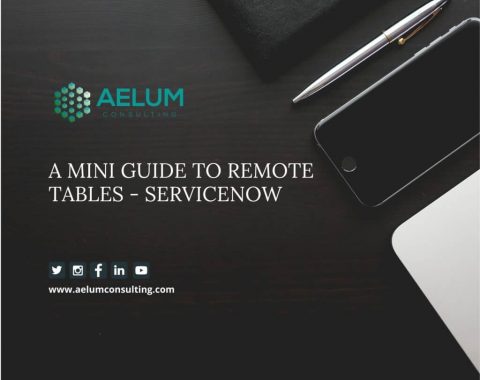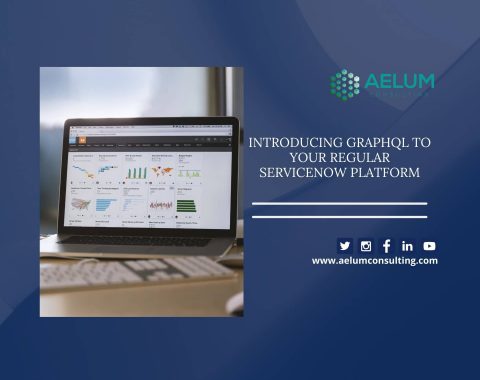Identify high-impact risks, assess them, make better risk-based decisions about risk mitigation strategies, and reduce reaction time from days to minutes with ServiceNow Risk Management.

ServiceNow Risk Management
Risk Management is a suite of risk management tools provided by ServiceNow, a leading provider of cloud-based services for enterprise management. ServiceNow Risk Management enables organizations to identify, assess, prioritize, and manage risks in a centralized and systematic manner. The platform provides a suite of tools for risk assessment, risk mitigation planning, risk tracking, and reporting, as well as integration with other ServiceNow applications such as security and compliance. ServiceNow Risk Management helps organizations to identify and manage risks across their operations and make informed decisions about risk mitigation strategies, thereby improving their overall risk management posture.
ServiceNow Risk Management Features
ServiceNow Risk Management provides a number of features to help organizations manage information security and risk, including:-
Risk Assessment
The ability to perform risk assessments on various assets and business processes and to track and manage the results of those assessments.
Risk Mitigation
Support for tracking and managing risk mitigation activities, including the assignment of mitigation tasks to specific individuals, tracking of progress and completion, and generation of reports.
Risk Monitoring
A dashboard to provide real-time visibility into the overall organizational risk posture and to monitor risk trends over time.
Risk Library
A centralized repository for storing and organizing risk-related information, including risk assessment templates, mitigation plans, and security policies.
Policy Management
Support for managing and enforcing security policies, including the ability to assign policies to specific assets and business processes, track policy compliance, and generate reports.
Compliance Management
Ability to monitor compliance with regulations, standards, and best practices, track compliance activities, and generate reports.
A Complete Process to Implement ServiceNow IRM in Your Organization!
Implementing ServiceNow IRM (Integrated Risk Management) in your organization typically involves the following steps
Define your risk management strategy
Evaluate your current risk management practices
Select the appropriate ServiceNow IRM modules
Configure ServiceNow IRM
Integrate ServiceNow IRM with other systems
Train your users
Monitor and evaluate your risk management program
Benefits of ServiceNow Risk Management
The benefits of using ServiceNow Risk Management for managing information security and risk include the following-
Improved risk visibility
Provides a centralized view of the organization’s risk posture, enabling better visibility into potential risks and facilitating informed decision-making.
Streamlined risk management processes
Common risk management task automation, like risk assessments and mitigation activities, can improve the efficiency & accuracy of these processes.
Enhanced collaboration
Facilitate collaboration between different teams and departments, helping to ensure everyone is working together towards a common goal of managing risk.
Better compliance
Monitor & enforce compliance with regulations, standards, and best practices. Also, it helps in reducing the risk of non-compliance and associated penalties.
Improved risk communication
Provides a centralized repository for storing & sharing risk-related data to enhance communication and transparency around risk management activities.
Increased efficiency
Automation processes & integration with other ServiceNow modules can reduce manual effort and improve the overall efficiency of risk management activities.
Better risk decision-making
Get valuable insight with real-time risk data and the ability to track risk trends over time. It can inform better decision-making around risk management.
Integration with other ServiceNow modules
Get a comprehensive risk management solution by integrating other ServiceNow modules, such as Incident, Change, or Compliance Management.
How Can Aelum Consulting Help with ServiceNow Risk Management?
Aelum Consulting is a Premier ServiceNow partner that provides consulting services to organizations looking to implement and optimize ServiceNow for their risk management needs. Specifically for ServiceNow Risk Management, we can help with the following-
Risk Assessment
Our expertise can help organizations assess and analyze their risk landscape by leveraging ServiceNow’s risk management capabilities to identify, evaluate, and prioritize risks.
Risk Analysis
We can help with risk analysis by providing expertise in identifying, assessing, and managing risks. We can develop strategies & recommendations to mitigate potential risks to operate effectively.
Risk Treatment Planning
We can help organizations develop risk treatment plans aligned with their risk management strategy & objectives. It includes defining strategies & developing action plans to address identified risks.
Risk Monitoring and Reporting
We can help set up risk monitoring and reporting processes using ServiceNow capabilities. It includes risk dashboards and reports to provide real-time visibility into the risk profile.
Compliance Management
We can help manage compliance requirements using ServiceNow capabilities. It includes tracking regulatory needs and controls and automating compliance assessments and audits.
Integration with other ServiceNow modules
We can help integrate risk management with other ServiceNow modules, such as ITSM and Security Operations. It can provide a more holistic view of an organization’s risk posture.
ServiceNow Integrated Risk Management Examples
Here are some examples of how organizations can use ServiceNow Integrated Risk Management (IRM) to manage risks in their operations:
-
Financial Services
Assess and manage the risk of financial fraud and cyber attacks. You can use this platform to evaluate the risk of specific incidents, such as phishing scams. Also, it can help to implement risk mitigation strategies, such as employee training programs.
-
Healthcare
Assess and manage the risk of data breaches and HIPAA violations. You can use this platform to track and respond to incidents, such as lost or stolen laptops containing sensitive patient information and ensure compliance with HIPAA regulations.
-
Manufacturing
Assess and manage the risk of supply chain disruptions. You can use this platform to evaluate the risk of specific suppliers, such as those located in countries with political instability, and implement risk mitigation strategies, such as diversifying suppliers.
-
Retail
Assess and manage the risk of security incidents, such as theft and shoplifting. You can use this platform to track and respond to incidents such as break-ins and robberies. Also, it can help to implement security measures, such as video surveillance systems.

Frequently Asked Questions
In ServiceNow IRM, define various roles to help manage information security and risk. Some common roles include:
- Risk Owner: Responsible for managing and mitigating risks associated with specific assets or business processes.
- Risk Manager: Responsible for overseeing the risk management process, monitoring the overall risk posture of the organization, and making decisions around risk management.
- Compliance Officer: Responsible for ensuring the organization complies with relevant regulations, standards, and best practices.
- Policy Owner: Responsible for developing, maintaining, and enforcing security policies & procedures.
- Auditor: Responsible for conducting risk assessments, reviewing compliance with policies and procedures, and providing recommendations for improving the risk management process.
These roles can be defined and assigned in ServiceNow IRM, and users can be granted access to the relevant parts of the system based on their role. By assigning specific roles and responsibilities, organizations can ensure that risk management is performed in a consistent and effective manner.
The process of using ServiceNow IRM for managing information security and risk typically involves the following steps:-
- Identify and categorize the assets and business processes critical to the organization and assess the risks associated with each.
- Conduct risk assessments on the assets and business processes, using risk assessment templates or custom assessments as needed. The assessment results are then stored in the ServiceNow IRM database.
- Based on the results of the risk assessments, create risk mitigation plans and assign mitigation tasks to specific individuals. The progress and completion of these tasks can be tracked and monitored in ServiceNow IRM.
- Develop, manage, and enforce security policies and procedures. Also, one can assign these policies to specific assets and business processes as needed.
- Monitor compliance with regulations, standards, & best practices, track compliance activities and generate reports as needed.
- Use the ServiceNow IRM dashboard to monitor the overall organizational risk posture, track risk trends over time, and make informed decisions around risk management.
- Periodically review and update the risk assessments, mitigation plans, and security policies to ensure they remain relevant and effective in managing risk.
This process can be repeated on an ongoing basis to provide continuous risk management and ensure that the organization’s risk posture remains under control.
Our Clients


























































